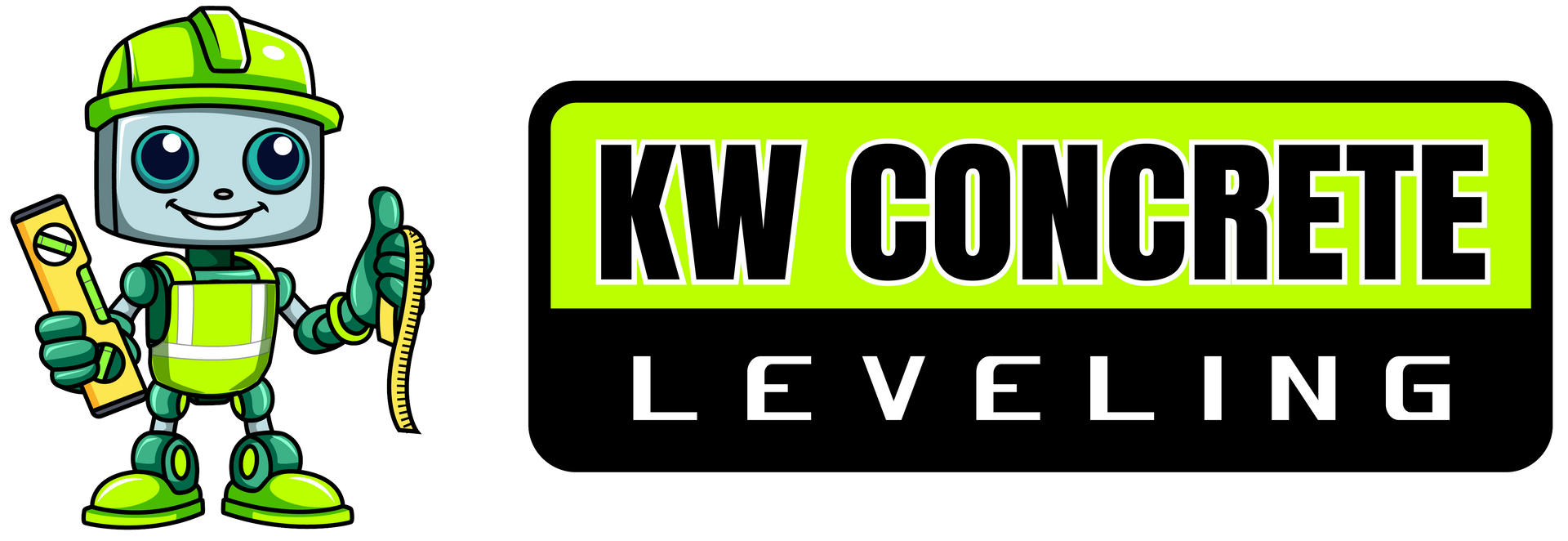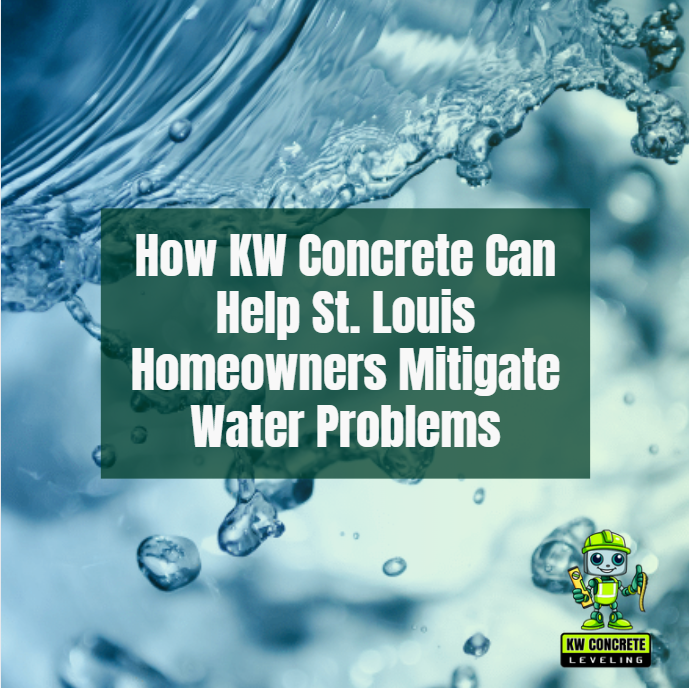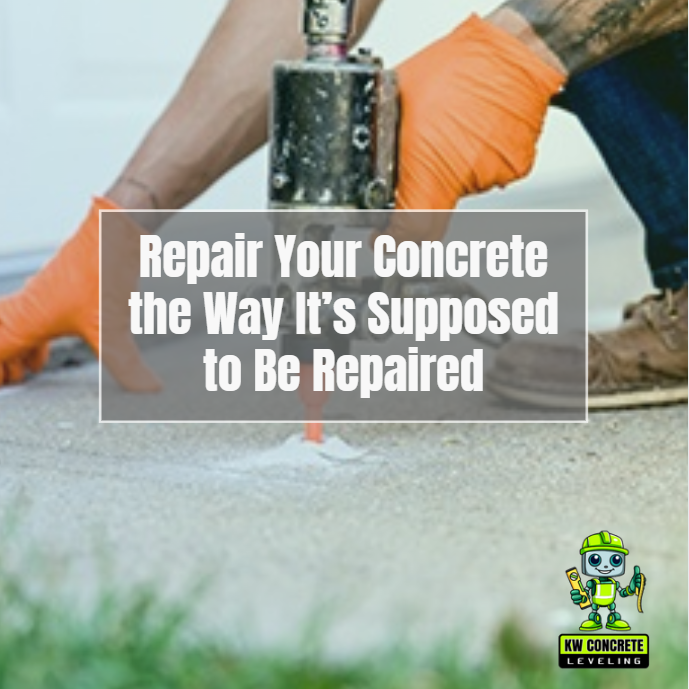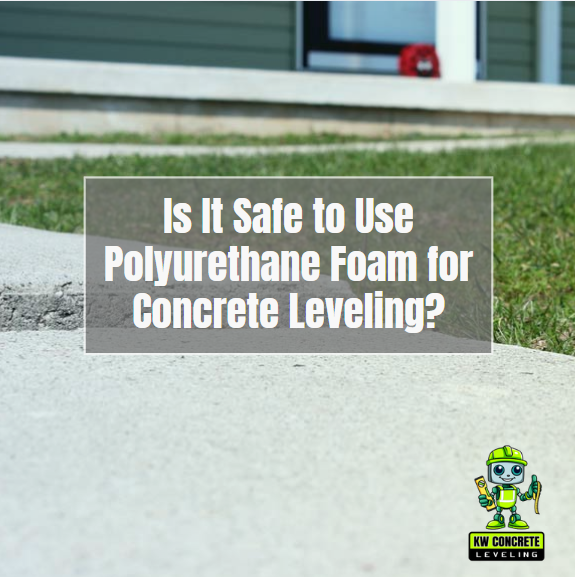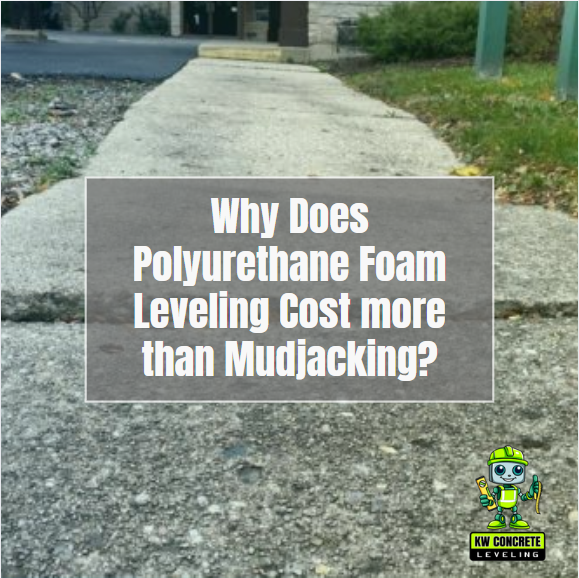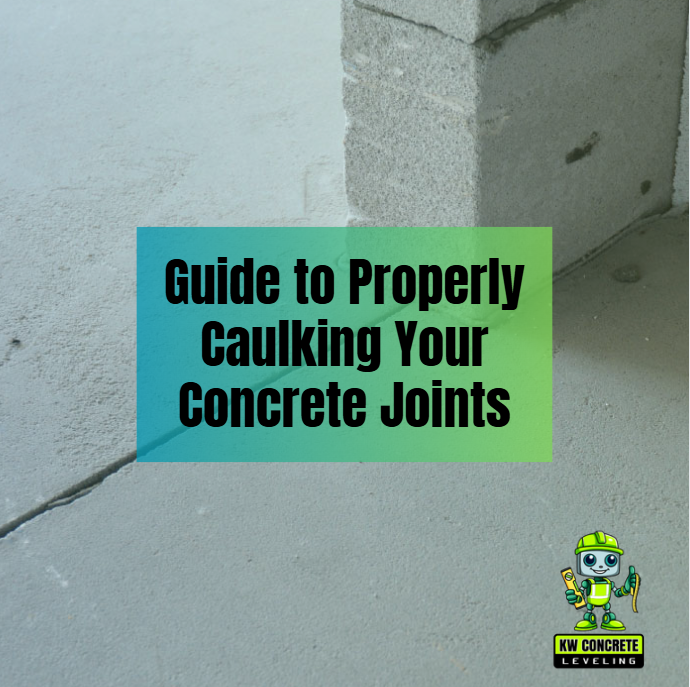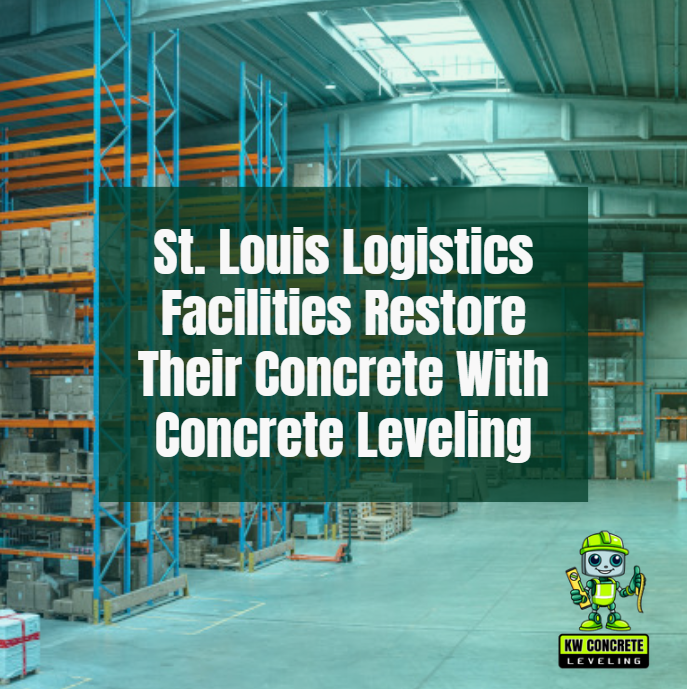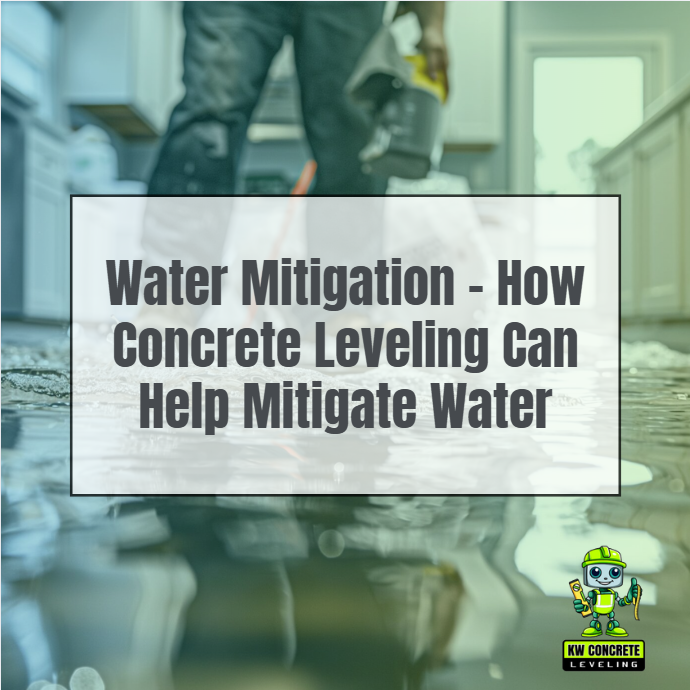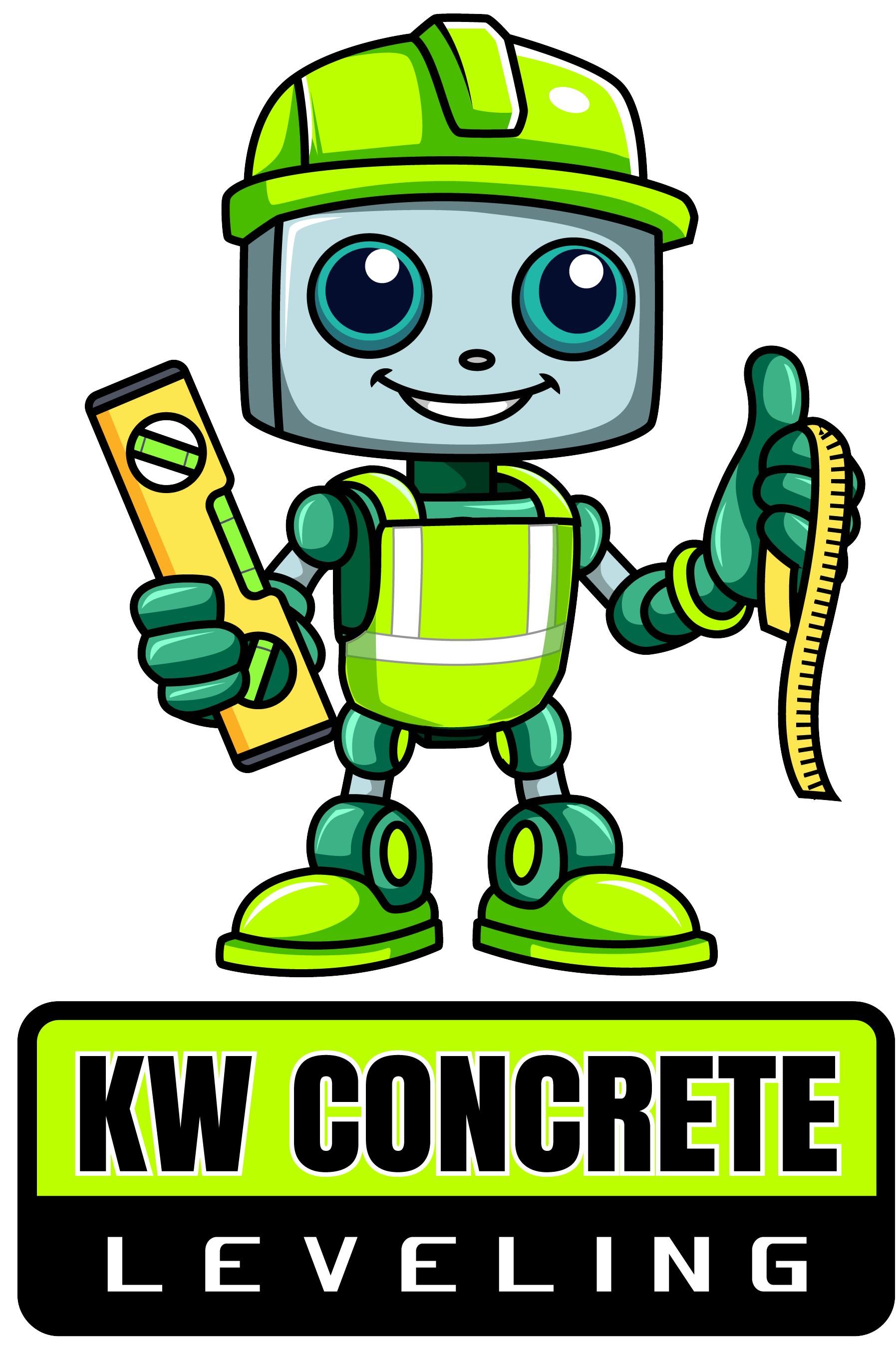Phone:
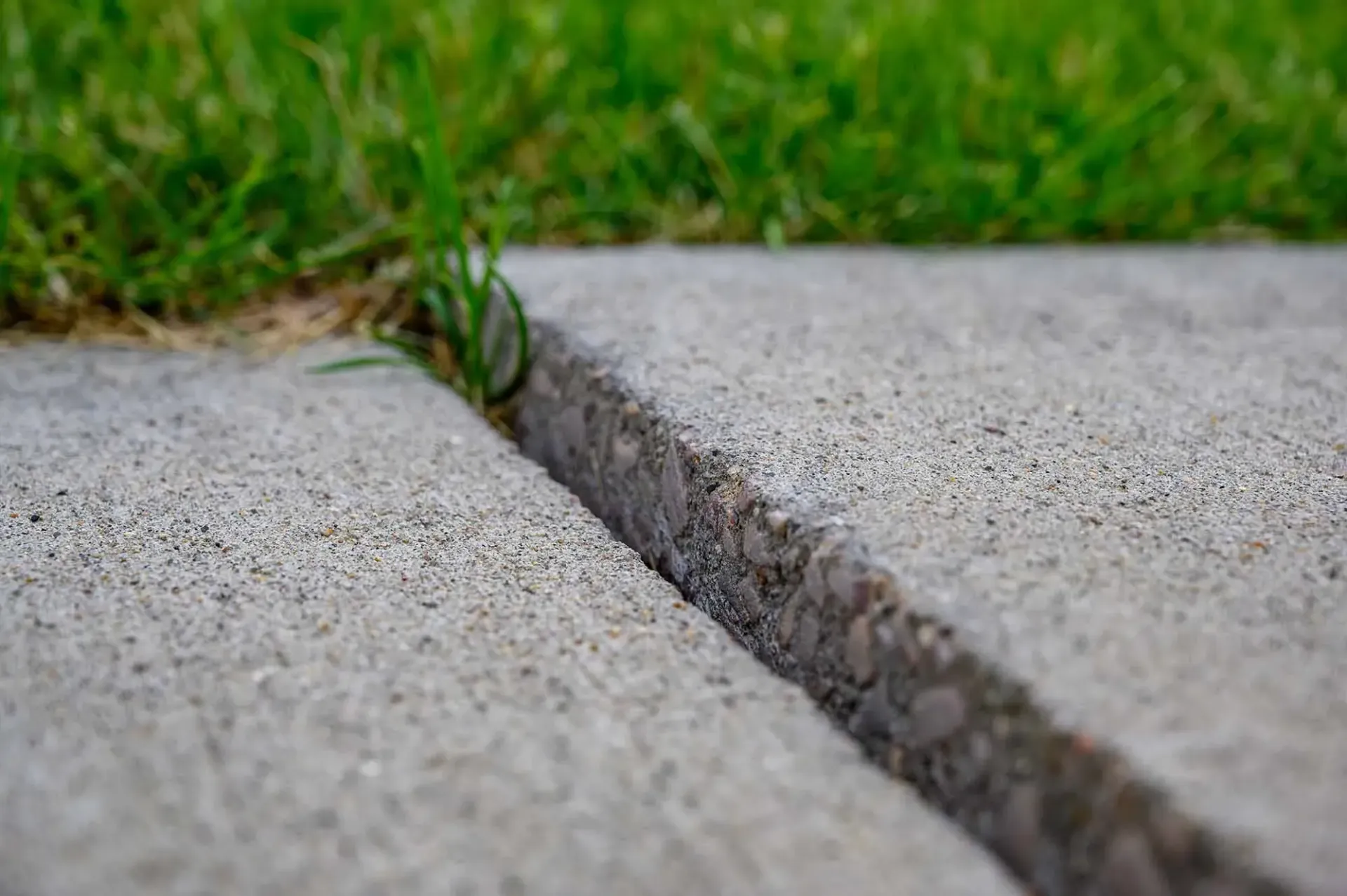
Concrete sinking is a common problem that can lead to hazards for property owners. When concrete slabs sink, they create uneven surfaces that not only affect the aesthetic appeal of the area but also pose safety concerns.
One of the most immediate hazards of sinking concrete is the creation of tripping hazards. Uneven walkways, driveways, and patios can lead to accidents, particularly for the elderly or children. These uneven surfaces can also make it difficult to navigate with bicycles, strollers, or wheelchairs, making them a liability for both residential and commercial properties.
Beyond safety concerns, sinking concrete can cause water drainage issues. As the slab sinks, water can pool in low areas, leading to standing water, which can contribute to erosion and eventually cause further damage to the concrete.
Let’s jump into what causes concrete sinking and then the solutions to fix it!
5 Reasons Why Concrete Sinks
1. Water
Excess water is a major factor in concrete sinking. When water accumulates around or beneath the concrete slab, it can cause the soil to become saturated and lose its load-bearing capacity. This weakening of the soil support can lead to shifting and settling of the concrete. Additionally, standing water can erode the soil over time, further exacerbating the sinking issue. Proper drainage systems and managing water runoff are crucial to preventing these problems.
2. Soil Compaction
Soil compaction is essential for providing a stable base for concrete. If the soil beneath the slab was not adequately compacted before the concrete was poured, it can settle unevenly over time. Poorly compacted soil can shift, compress, or erode, leading to uneven support for the concrete slab. Ensuring thorough soil compaction during construction helps to prevent these issues and maintains a stable foundation.
3. Poor Construction Practices
Poor construction practices can contribute to concrete sinking. This includes using subpar materials, inadequate preparation of the site, or not following proper procedures. For example, if the concrete mix is incorrect or if the slab is not properly cured, it can lead to structural weaknesses. Ensuring that construction practices meet industry standards and using high-quality materials can help prevent sinking and extend the life of the concrete.
4. Erosion
Erosion is another common cause of concrete sinking. Water from rain, runoff, or irrigation can wash away the soil beneath the concrete slab, creating voids and causing the slab to settle unevenly. This is especially problematic in areas with poor drainage or heavy rainfall. Implementing effective drainage solutions, such as installing French drains or grading the landscape to direct water away from the slab, can help prevent erosion and protect the integrity of the concrete.
5. Animals & Tree Roots
Animals and tree roots can disrupt the soil under concrete slabs, leading to sinking. Burrowing animals, such as rodents, can create tunnels and voids in the soil, while growing tree roots can push against or displace the soil. Both of these factors can undermine the support for the concrete slab and cause it to sink. Regular maintenance, including managing vegetation and addressing pest issues, can help mitigate these risks and maintain the stability of your concrete surfaces.
Options to Fix Sinking Concrete
When dealing with sinking concrete, homeowners typically have two main options for repair: concrete leveling and concrete replacement. Each option has its own benefits and costs, but for many, concrete leveling is a more practical and cost-effective choice.
Concrete Leveling
Concrete leveling is a process that involves lifting and stabilizing the existing concrete slab using specialized techniques. This method is ideal for addressing uneven surfaces without the need for complete removal and replacement of the concrete.
- How It Works: Concrete leveling can be done through methods such as polyurethane foam injection or mudjacking. Polyurethane foam is injected beneath the slab, expanding to lift and stabilize the concrete, while mudjacking involves pumping a cement-based slurry into the voids beneath the slab.
- Cost: Concrete leveling is generally more affordable than full replacement. The cost typically ranges from $3 to $7 per square foot, depending on factors such as the size of the area, the method used, and the extent of the problem. It’s a budget-friendly option that provides a long-lasting solution with minimal disruption.
- Benefits: Concrete leveling offers several advantages, including a quicker and less invasive process compared to replacement. It addresses the problem without the need for removing and disposing of the existing concrete, making it an eco-friendly option. Additionally, it’s effective for most minor to moderate sinking issues, providing a smooth, stable surface at a lower cost.
Concrete Replacement
Concrete replacement involves removing the existing concrete slab and pouring a new one. This option is often considered for severely damaged or extensively sinking slabs that cannot be effectively repaired through leveling.
- How It Works: The process involves demolishing and removing the old concrete, preparing the site, and then pouring a new slab. This approach addresses underlying issues but requires significant labor and time.
- Cost: Concrete replacement is more expensive, with costs typically ranging from $8 to $15 per square foot. This higher price reflects the extensive labor and materials involved in removing and reinstalling a new concrete slab.
- Benefits: Concrete replacement provides a fresh start, addressing all underlying issues with a new slab. It’s the best option for cases where the existing concrete is severely damaged or beyond repair. However, it’s more disruptive and costly compared to leveling.
Why Concrete Leveling is Often the Better Choice
For most homeowners, concrete leveling presents a better alternative to replacement. It’s more cost-effective, less disruptive, and can provide a lasting solution for many sinking issues. Leveling methods like polyurethane foam injection are efficient, eco-friendly, and capable of addressing a variety of sinking problems without the need for complete slab removal.
By choosing concrete leveling, you can restore your concrete surfaces to their original condition at a fraction of the cost of replacement, while minimizing downtime and disruption to your daily life.
Call For An Estimate!
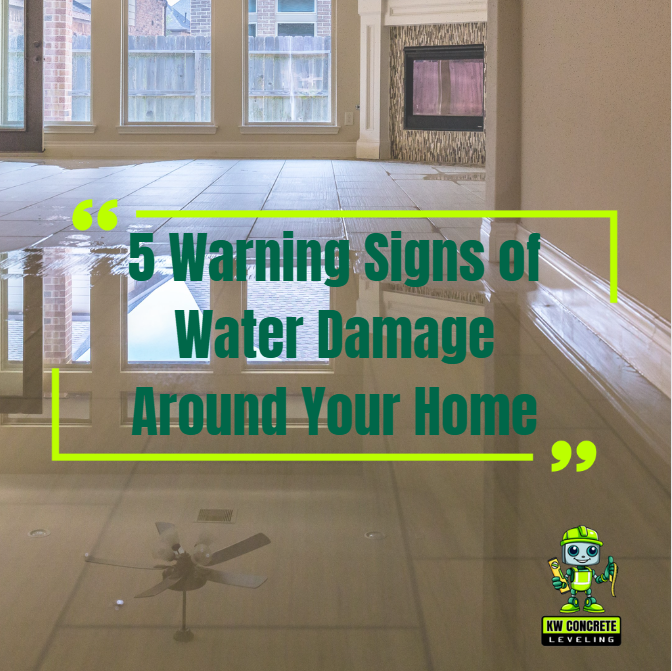
Quick Links
Contact Details
Phone: 314-661-5440
Location: St. Louis Missouri
Hours:
- Mon - Fri
- -
- Sat - Sun
- Closed
Privacy Policy | Terms & Conditions
All Rights Reserved | KW Concrete Leveling in St. Louis
